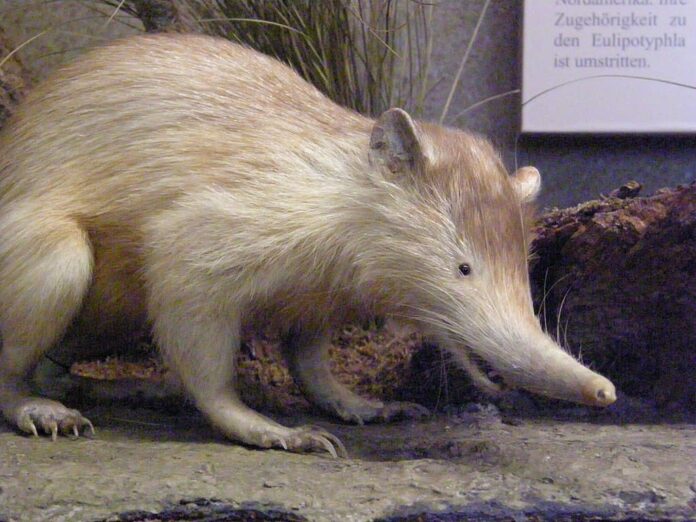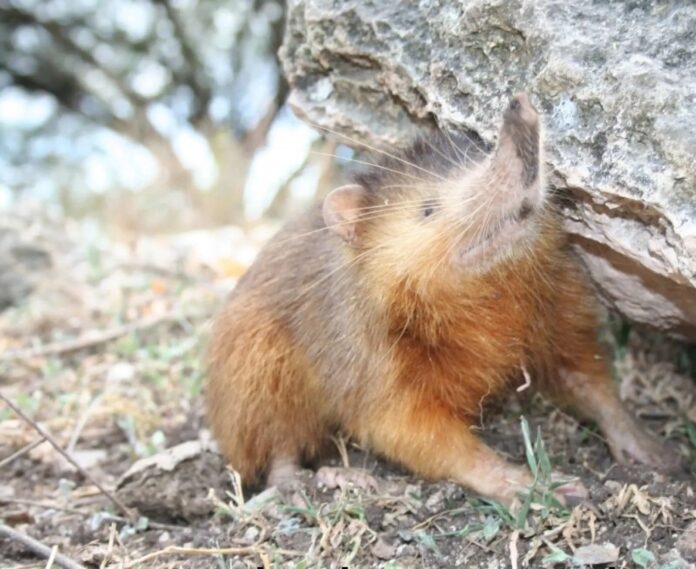Solenodon is a small creature with a big reputation for being one of the very few venomous mammals in the world. Fear not my friends because solenodon does not produce enough venom to kill a human. They are only dangerous and deadly to their fellow animals, and all they need is a single bite. This bit here is going to talk not only about their venom but also other basic information about them. In case you know a lot about them, don’t forget to share your thoughts with us below.
1Appearance

The solenodon is a rabbit-sized and shrew-like mammal that has tiny eyes and a long cartilaginous snout. This snout is flexible, and the Hispaniolan species has a ball-and-socket joint at the base to aid maneuverability. It has multicolored fur with naked scaly tails, and this mammal can grow up to about a foot long. On their 4 legs are long claws that they use to dig burrows and grab their prey. However, the most famous features of these mammals are something else that is rather peculiar. The females have two teats that locate almost on their buttocks. The 2 species of solenodons look quite different from each other, especially in the coloration. Cuban solenodons have longer and coarser black hair, and it is smaller than the Hispaniolan solenodons.
2Behavior
Solenodons are venomous nocturnal mammals and burrowing insectivores with fascinating behaviors in their daily life and routines. Solenodons are famous for their ability to produce venomous saliva from modified salivary glands in the mandible. A solenodon can squeeze venomous saliva out of its incisors when it needs to attack or defend itself. One bite can result in breathing difficulty, convulsions, general depression, and paralysis, but this only works on small prey. These mammals are jumpy so they are easily provoked which is not a good thing when they freak out. When that happens, a solenodon will bite with no warning, give off grunts, or squeal at the enemies.
Things go the same with fellow solenodons if they get too close while a solenodon is looking for food alone. These mammals are also quite vocal since they make a number of noises like clicks, grunts, and shrieks. Another interesting thing about them is that solenodons can breed at any time of the year. Females usually have 2 litters every year, and each of which is between one to three babies at a time. Because the mother only has 2 nipples, the babies may fight each other when the litter has 3 babies. So it is common and possible for the weakest one among the 3 to die from malnourishment. The mother nurses her young for up to 75 days, and the first litter stays until the next litter is born.
3Feeding & Habitats
As nocturnal mammals, they come out at night to eat grubs and insects with the help of their keen senses. Their most common meals are earthworms, insects, and invertebrates, but they also feed on vertebrate carrion if there are any. Solenodons are also opportunistic hunters so they will also target small amphibians and reptiles when the time is right. When hunting, solenodons use echolocation, hearing, and sense of smell to locate their prey before finding them and killing them. Their snouts play an important part because they allow these mammals to spot potential prey that are in narrow crevices. Apart from those live meals above, solenodons also feed on fruits, roots, and vegetables since they are omnivores.
You can only find solenodon on 2 Caribbean islands of Cuba and Hispaniola (the Dominican Republic and Haiti). On these two islands, they live in burrows in bushy areas, highland pine forests, and lowland dry forests at night. Besides those areas, they can also be found in flat brushy areas and plantations when they seek food. During the daytime, they may hide in burrows, caves, and hollow logs to avoid any encounters with predators.
4Predators & Threat
Their natural predators are actually animals like cats, dogs, and mongooses that attack and prey on them. There are 2 living solenodon species nowadays, Cuban Solenodon and Hispaniolan Solenodon, and both populations are vulnerable to various threats. Cuban solenodons are endangered, and the main threat is predation by small Indian mongoose. Hispaniolan solenodons are endangered, but those in Haiti are functionally extinct with the exception of a small population in some areas. Because they are small, they are very vulnerable even to local animals which is a big concern. Another threat to these mammals is deforestation, and it is a big part that drives them into extinction.
Related Post: Venomous Frogs That Can Kill You




